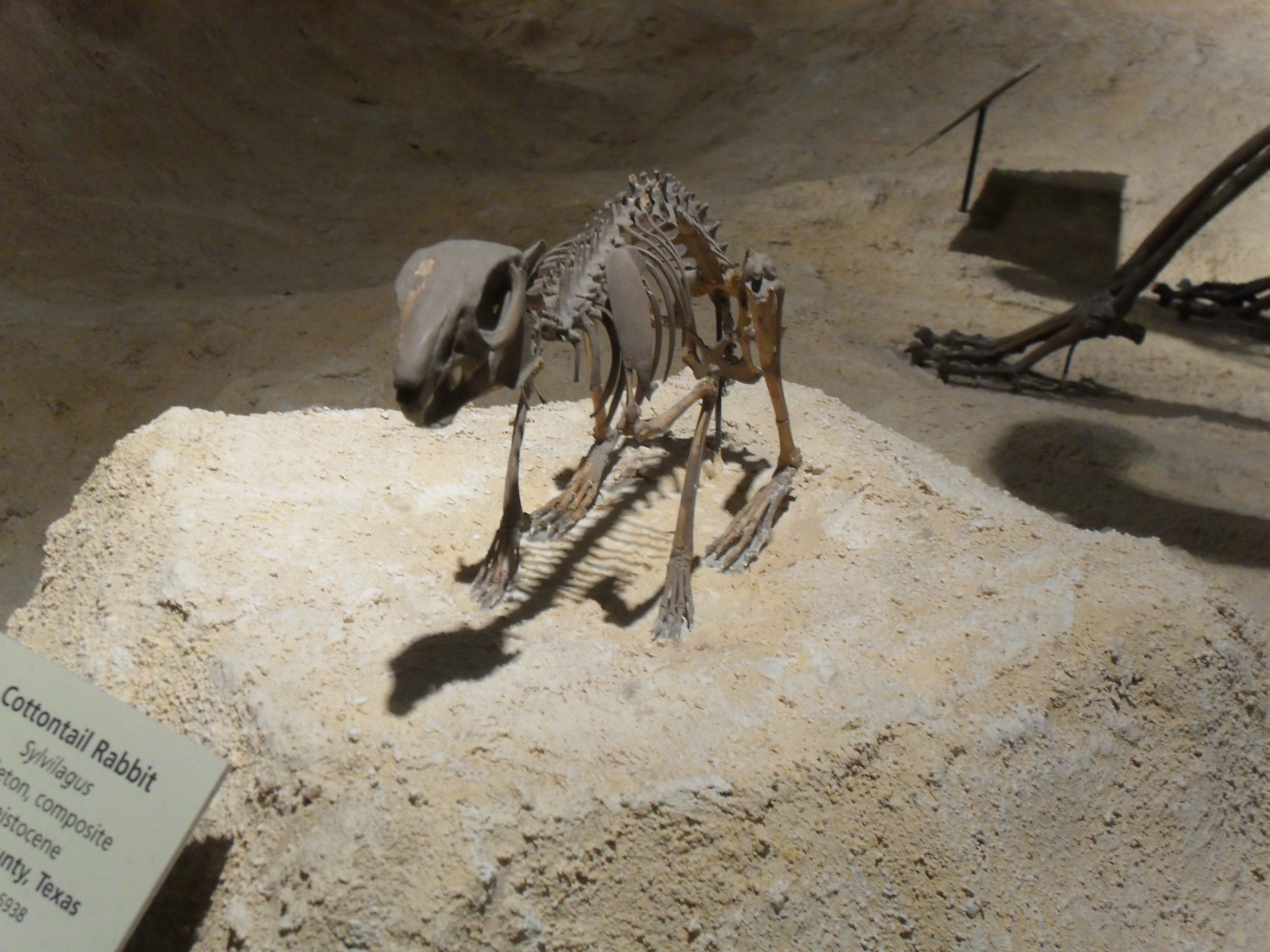|
Northern Tapeti
The northern tapeti (''Sylvilagus incitatus'') is a species of cottontail rabbit related to the Central American tapeti (''Sylvilagus gabbi''). Its type locality is an island in the Pearl Islands of Panama. Previously it was considered a subspecies of the Central American tapeti, and later of the common tapeti (''Sylvilagus brasilensis'') from 1950 onwards (though some studies still placed it as a subspecies of ''S. gabbi''), it was split into its own separate species in 2019, with researchers noting its "bizarre dental anatomy". The northern tapeti is one of two tapeti species other than the common tapeti located north of the Amazon River, with the other being the Santa Marta tapeti The Santa Marta tapeti (''Sylvilagus sanctaemartae'') is a species of cottontail rabbit native to the lowlands of northern Colombia. It was previously considered a subspecies of the common tapeti (''Sylvilagus brasiliensis'') but analysis in 201 .... References {{Authority control Sylv ... [...More Info...] [...Related Items...] OR: [Wikipedia] [Google] [Baidu] |
Outram Bangs
Outram Bangs (January 12, 1863 – September 22, 1932) was an American zoologist. Biography Bangs was born in Watertown, Massachusetts, as the second son of Edward and Annie Outram (Hodgkinson) Bangs. He studied at Harvard from 1880 to 1884, and became Curator of Mammals at the Harvard Museum of Comparative Zoology in 1900. He died at his summer home at Wareham, Massachusetts. Works"The Florida Deer" ''Proceedings of the Biological Society of Washington'' 10:25–28 (1896)''The hummingbirds of the Santa Marta Region of Colombia''American Ornithologists' Union, New York (1899)"The Florida Puma" ''Proceedings of the Biological Society of Washington'' 13:15–17. (1899)"The Mammals and Birds of the Pearl Islands, Bay of Panama" ''Harvard University Museum of Comparative Zoology, Bulletin 46'' (8) : 137–160 (1905) with John Eliot Thayer"Notes on the Birds and Mammals of the Arctic Coast of East Siberia" ''New England Zoological Club, Proceedings'', 5 : 1–66 (1914) with Glove ... [...More Info...] [...Related Items...] OR: [Wikipedia] [Google] [Baidu] |
Edward William Nelson
Edward William Nelson (May 8, 1855 – May 19, 1934) was an American naturalist and ethnologist. A collector of specimens and field naturalist of repute, he became a member of several expeditions to survey the fauna and flora. He was part of a team with Clinton Hart Merriam that took part in the Death Valley Expedition. He also explored the Yosemite Valley. A number of vertebrate species are named after him. Biography Nelson was born in Manchester, New Hampshire, on May 8, 1855, the first son of William and Martha () Nelson. Nelson and his brother then lived with his maternal grandparents in the Adirondacks when his father joined the Union Army and mother went to Baltimore as a nurse. Here he fell in love with the wilderness. Nelson moved to Chicago after his father was killed in the Civil War and his mother established a dressmaking business. In 1871, his large insect collection was lost in the Chicago Fire and the family was left homeless. This was the time that h ... [...More Info...] [...Related Items...] OR: [Wikipedia] [Google] [Baidu] |
Philip Hershkovitz
Philip Hershkovitz (12 October 1909 – 15 February 1997) was an American mammalogy, mammalogist. Born in Pittsburgh, he attended the Universities of Pittsburgh and Michigan and lived in South America collecting mammals. In 1947, he was appointed a curator at the Field Museum of Natural History in Chicago and he continued to work there until his death. He published much on the mammals of the Neotropics, particularly primates and rodents, and described almost 70 new species and subspecies of mammals. About a dozen species have been named after him. Life Early life Philip Hershkovitz was born on 12 October 1909 in Pittsburgh to parents Aba and Bertha (Halpern) Hershkovitz. He was the second child and only son among four siblings. He reported that his father died when he was nine years old. After graduating from Schenley High School in 1927, he attended the University of Pittsburgh from 1929 to 1931, majoring in zoology, before transferring to the University of Michigan at Ann Arbo ... [...More Info...] [...Related Items...] OR: [Wikipedia] [Google] [Baidu] |
Cottontail Rabbit
Cottontail rabbits are in the ''Sylvilagus'' genus, which is in the family Leporidae. They are found in the Americas. Most ''Sylvilagus'' species have stub tails with white undersides that show when they retreat, giving them their characteristic name. However, this feature is not present in all ''Sylvilagus'', nor is it unique to the genus. However their fur ranges from brown to gray and changes throughout the year, depending on the season. The genus is widely distributed across North America, Central America, and northern and central South America, though most species are confined to particular regions. Most species live in nests called forms, and all have altricial young. They often live on the edges of fields, farms, and other open spaces far from highly populated areas. But sometimes they make their nests in yards and parks near more people. An adult female averages three litters per year, which can be born in any season. Occurrence and litter size depend on several factors ... [...More Info...] [...Related Items...] OR: [Wikipedia] [Google] [Baidu] |
Central American Tapeti
The Central American tapeti (''Sylvilagus gabbi'') or Gabbi's cottontail is a species of cottontail rabbit native to southern Mexico and much of Central America. It was previously considered a subspecies of the common tapeti (''Sylvilagus brasiliensis'') but analysis in 2017 confirmed that it is sufficiently distinct in both appearance and genetics to be considered a species in its own right. It is closely related to the northern tapeti, which some authors describe as a subspecies of ''S. gabbi''. The name Gabbi's cottontail comes from American paleontologist William More Gabb William More Gabb (January 16, 1839 – May 30, 1878) was an American paleontologist. Gabb was born and educated in Philadelphia, Pennsylvania, the leading center of American science at the time. He graduated from Jefferson Grammar School at .... Range and distribution The Central American Tapeti is distributed in Central America from eastern to southeastern Mexico to Panama. Thereby the range of ... [...More Info...] [...Related Items...] OR: [Wikipedia] [Google] [Baidu] |
Type Locality (biology)
In biology, a type is a particular wikt:en:specimen, specimen (or in some cases a group of specimens) of an organism to which the scientific name of that organism is formally associated. In other words, a type is an example that serves to anchor or centralizes the defining features of that particular taxon. In older usage (pre-1900 in botany), a type was a taxon rather than a specimen. A taxon is a scientifically named grouping of organisms with other like organisms, a set (mathematics), set that includes some organisms and excludes others, based on a detailed published description (for example a species description) and on the provision of type material, which is usually available to scientists for examination in a major museum research collection, or similar institution. Type specimen According to a precise set of rules laid down in the International Code of Zoological Nomenclature (ICZN) and the ''International Code of Nomenclature for algae, fungi, and plants'' (ICN), the ... [...More Info...] [...Related Items...] OR: [Wikipedia] [Google] [Baidu] |
Pearl Islands
The Pearl Islands (Spanish: Archipiélago de las Perlas or Islas de las Perlas) is a group of 200 or more islands and islets (many tiny and uninhabited) lying about off the Pacific coast of Panama in the Gulf of Panama. Islands The most notable island is Contadora Island (or Isla Contadora in Spanish), known for its resorts. Contadora was said to be used by the Spanish conquistadors as a stop for taking inventory of booty prior to returning to Spain, hence the name (''contador'' means counter or bookkeeper in Spanish). Contadora is a resort island, with many homes owned by wealthy Panamanians. There are a large hotel and other cabins available. Most of the resort workers live on nearby Isla Saboga. Domestic airline Air Panama no longer flies between Panama City and Contadora and Isla San José. FlyTrip, a new domestic airline, flies on Fridays and Sundays. While Sea de Las Perlas Ferry does daily trips to Contadora and Saboga islands ( which are islands near Las Perl ... [...More Info...] [...Related Items...] OR: [Wikipedia] [Google] [Baidu] |
Panama
Panama, officially the Republic of Panama, is a country in Latin America at the southern end of Central America, bordering South America. It is bordered by Costa Rica to the west, Colombia to the southeast, the Caribbean Sea to the north, and the Pacific Ocean to the south. Its capital and largest city is Panama City, whose metropolitan area is home to nearly half of the country's over million inhabitants. Before the arrival of Spanish Empire, Spanish colonists in the 16th century, Panama was inhabited by a number of different Indigenous peoples of Panama, indigenous tribes. It Independence Act of Panama, broke away from Spain in 1821 and joined the Republic of Gran Colombia, a union of Viceroyalty of New Granada, Nueva Granada, Ecuador, and Venezuela. After Gran Colombia dissolved in 1831, Panama and Nueva Granada eventually became the Republic of Colombia. With the backing of the United States, Panama seceded from Colombia in 1903, allowing the construction of the Panama Ca ... [...More Info...] [...Related Items...] OR: [Wikipedia] [Google] [Baidu] |
Common Tapeti
The common tapeti (''Sylvilagus brasiliensis''), also known as the Brazilian cottontail, forest cottontail, or (formerly) simply tapeti is a species of cottontail rabbit. It is small to medium-sized with a small, dark tail, short hind feet, and short ears. As traditionally defined, its range extends from southern Mexico to northern Argentina, but this includes several distinctive population that have since been split into separate species. Under this narrower definition, the true common tapeti only occurs in the Atlantic Rainforest of coastal northeastern Brazil and it is classified as "Endangered" by the IUCN. The American Society of Mammalogists concurs, but also tentatively classifies several distinct populations that have not yet received proper species names into ''S. brasiliensis'', and thus considers it to range from Venezuela south to Argentina. Taxonomy The species was first described scientifically by Carl Linnaeus in the 10th edition of Systema Naturae, published in 1 ... [...More Info...] [...Related Items...] OR: [Wikipedia] [Google] [Baidu] |
Santa Marta Tapeti
The Santa Marta tapeti (''Sylvilagus sanctaemartae'') is a species of cottontail rabbit native to the lowlands of northern Colombia. It was previously considered a subspecies of the common tapeti (''Sylvilagus brasiliensis'') but analysis in 2017 confirmed that it is sufficiently distinct in both appearance and genetics to be considered a species in its own right. The name Santa Marta tapeti is derived from the mountain range where the species was first discovered (its Type locality (biology), type locality), the Sierra Nevada de Santa Marta. References Mammals described in 1950 Sylvilagus Mammals of Colombia Taxa named by Philip Hershkovitz {{Lagomorph-stub ... [...More Info...] [...Related Items...] OR: [Wikipedia] [Google] [Baidu] |
Sylvilagus
Cottontail rabbits are in the ''Sylvilagus'' genus, which is in the family Leporidae. They are found in the Americas. Most ''Sylvilagus'' species have stub tails with white undersides that show when they retreat, giving them their characteristic name. However, this feature is not present in all ''Sylvilagus'', nor is it unique to the genus. However their fur ranges from brown to gray and changes throughout the year, depending on the season. The genus is widely distributed across North America, Central America, and northern and central South America, though most species are confined to particular regions. Most species live in nests called forms, and all have altricial young. They often live on the edges of fields, farms, and other open spaces far from highly populated areas. But sometimes they make their nests in yards and parks near more people. An adult female averages three litters per year, which can be born in any season. Occurrence and litter size depend on several factor ... [...More Info...] [...Related Items...] OR: [Wikipedia] [Google] [Baidu] |






